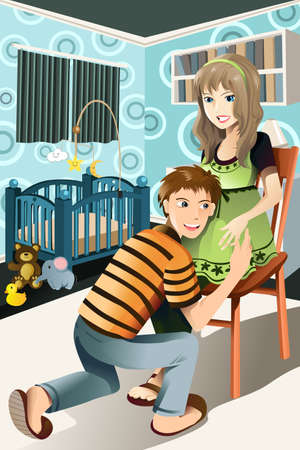Understanding Family Dynamics with Autism
When a child is diagnosed with autism, the entire family feels the impact. In American households, each family member may take on new roles or responsibilities to support their loved one. It’s important to understand how these changes can affect relationships, daily routines, and emotions within the home.
Shifts in Family Roles and Responsibilities
Having a child with autism often means parents spend extra time managing therapies, doctor appointments, and educational plans. Siblings might notice that their brother or sister needs more attention, which can sometimes lead to feelings of jealousy or confusion. At the same time, siblings may develop empathy and maturity as they learn to help out at home.
| Family Member | Common Experiences |
|---|---|
| Parents | Increased caregiving duties, advocacy for services, balancing work and family life |
| Siblings | Mixed emotions (pride, frustration), helping with routines, learning patience |
| Extended Family | Adjusting expectations, offering support, seeking understanding about autism |
The Emotional Climate at Home
The emotional atmosphere in families with a child on the spectrum can be complex. While there are moments of joy and growth, families may also face stress due to uncertainty about the future or challenges with behavior management. Open communication is key—families who talk openly about their feelings often find it easier to handle tough times together.
Cultural Influences in American Households
In the United States, families may seek community support through local parent groups, school counselors, or faith-based organizations. American culture values independence and self-advocacy, so parents often become strong advocates for their child’s needs at school and in healthcare settings. Siblings might also participate in peer support programs designed specifically for brothers and sisters of kids with autism.
Key Takeaways for Families
- Every family adapts differently—there’s no “right” way to adjust.
- It’s normal for emotions to run high; seeking outside support is encouraged.
- Open conversations help all family members feel heard and included.
Understanding these dynamics is the first step toward building a supportive environment for everyone in the household.
2. Recognizing the Experiences of Neurotypical Siblings
Growing up with a brother or sister who has autism brings unique experiences for neurotypical siblings. It’s important to understand not only the challenges they might face, but also the emotions and positive opportunities that can shape their lives. By recognizing these experiences, families can better support all children in the household.
Common Challenges Faced by Siblings
Neurotypical siblings often experience a mix of feelings and situations that are different from those of their peers. Some of the most common challenges include:
| Challenge | Description |
|---|---|
| Attention Imbalance | Parents may need to spend more time caring for the child with autism, which can leave siblings feeling overlooked. |
| Increased Responsibility | Siblings might take on extra tasks at home or help care for their brother or sister. |
| Social Stigma | Siblings sometimes feel embarrassed or isolated due to misunderstandings about autism among friends or classmates. |
| Emotional Stress | It’s normal for siblings to feel frustration, worry, or even guilt about their sibling’s condition or behavior. |
| Lack of Understanding | Younger siblings especially may struggle to understand what autism means and why family life is different. |
Emotional Responses: It’s Okay to Have Mixed Feelings
Siblings of children with autism can have a wide range of emotions. They might feel proud and protective, but also jealous, angry, or sad at times. These feelings are valid and common. Open conversations within the family can help everyone feel heard and supported.
Opportunities for Growth and Connection
Despite the challenges, growing up with a sibling who has autism can offer valuable opportunities, such as:
- Building Empathy: Siblings often become more understanding and compassionate toward others’ differences.
- Learning Patience: Everyday life teaches them how to be patient and flexible in different situations.
- Tight-Knit Bonds: Many siblings develop strong connections as they navigate challenges together.
- Diverse Friendships: Siblings may form friendships with other families in the autism community, expanding their social circles.
The Importance of Support Systems
No one should go through this journey alone. Support groups for siblings, family counseling, and community programs can make a real difference in helping neurotypical siblings process their experiences and feel valued within the family unit.

3. Strategies for Strengthening Family Communication
Open and effective communication is key for families navigating life with a child on the autism spectrum. When family members—including siblings—feel heard, supported, and understood, it creates a stronger home environment for everyone. Below are some practical, culturally relevant techniques and conversation starters designed to help American families talk more openly and supportively with each other.
Practical Techniques for Better Communication
| Technique | Description | How to Use in Daily Life |
|---|---|---|
| Family Meetings | Regular check-ins where everyone shares thoughts and feelings in a safe space. | Set aside 20-30 minutes each week after dinner; pass around a “talking stick” so each person gets a turn. |
| Active Listening | Listening without interrupting, then repeating back what you heard to confirm understanding. | If your child says, “I feel left out,” respond with, “It sounds like you’re feeling left out. Can you tell me more?” |
| Visual Supports | Using charts, schedules, or drawings to help children express themselves. | Create a “feelings chart” on the fridge where siblings can point to or mark their emotions. |
| Praise and Encouragement | Acknowledge positive behaviors and efforts, especially when siblings show understanding or patience. | Saying things like “I’m proud of how you helped your brother today!” reinforces supportive actions. |
Culturally Relevant Conversation Starters
In American households, casual conversation often happens during shared activities like meals or car rides. Here are some simple conversation starters designed to fit naturally into everyday moments:
- “What was the best part of your day?” – Helps everyone share positive experiences and feelings.
- “Is there something you wish I understood better about how you feel?” – Opens the door for honest discussions about frustrations or needs.
- “How can we work together as a team this week?” – Encourages problem-solving and cooperation among all family members.
- “If you could change one thing about our routine, what would it be?” – Invites input from siblings who may feel overlooked.
- “Can you teach me something you know that I don’t?” – Builds confidence in siblings and recognizes their unique strengths.
Tips for Supportive Communication at Home
- Keep language age-appropriate for all kids involved.
- Avoid blaming or singling out any one family member during discussions.
- Use humor gently—it can break tension but should never be at someone’s expense.
- If conversations get heated, take a break and revisit the topic later when everyone is calm.
- Remember that every family’s rhythm is different; find what works best for yours and adjust as needed.
Encouraging Ongoing Dialogue
Building strong communication habits takes time. By using these strategies regularly, families can nurture trust and mutual understanding—making it easier to face challenges together and celebrate successes along the way.
4. Fostering Inclusion and Individual Attention
Creating an Inclusive Family Environment
When a child is diagnosed with autism, the entire family experiences changes. Siblings may sometimes feel overlooked or unsure about their role in the family. To foster a sense of inclusion, its important to make sure all children feel like they belong and are valued for who they are. This can be done by openly talking about autism in age-appropriate ways, encouraging siblings to share their feelings, and involving everyone in family decisions whenever possible.
Balancing Family Activities
Family activities can sometimes revolve around the needs of a child with autism, but its essential to create opportunities that everyone can enjoy. Consider planning events that accommodate your childs sensory needs while also including activities each sibling loves. You might take turns choosing weekend outings or have special theme nights at home where everyone gets involved. Here’s a table of ideas for balancing family activities:
| Activity Type | Inclusive Adaptations | Siblings’ Involvement |
|---|---|---|
| Game Night | Choose games with simple rules or visual supports | Let each sibling pick a game during the month |
| Outdoor Outings | Pick quiet parks or early hours to avoid crowds | Siblings help plan snacks or activities |
| Movie Night | Select sensory-friendly movies or adjust volume/lighting | Rotate movie selections between siblings |
| Craft Time | Provide various materials for different skill levels | Siblings team up or work on individual projects together |
Ensuring Individual Attention for Each Child
Every child deserves moments when they feel truly seen and heard. Parents can set aside “special time” for each child, even if it’s just 10-15 minutes a day. This one-on-one attention allows siblings to share their interests, concerns, and achievements without interruption. Scheduling regular check-ins—like going out for ice cream or having a short walk together—can strengthen bonds and remind siblings they are just as important.
Tips for Providing Individual Support:
- Create Personal Rituals: Have a bedtime chat, read together, or work on a hobby unique to each sibling.
- Acknowledge Achievements: Celebrate milestones big and small—from school projects to learning new skills.
- Encourage Open Communication: Let siblings know it’s okay to express both positive and challenging feelings.
- Engage Extended Family: Grandparents, aunts, and uncles can also provide extra attention and support.
The Role of Community Resources
Siblings often benefit from meeting others who understand their experience. Many communities offer support groups, mentorship programs, or recreational activities designed for siblings of children with special needs. These resources can give siblings a safe space to connect, learn coping strategies, and build confidence outside the home.
5. Accessing Community Resources and Support
Finding support outside the home is essential for families navigating life with a child on the autism spectrum. In the United States, there are many organizations, programs, and resources designed to help not just the child with autism but also their siblings and family as a whole. Here’s how you can connect with these valuable community supports.
Local Support Groups
Support groups offer a space to share experiences, ask questions, and find encouragement from other families facing similar challenges. These groups can be specific to siblings, parents, or the entire family. Some popular American organizations include:
| Organization | Focus | How to Connect |
|---|---|---|
| Autism Society of America | Parent and sibling support, advocacy | Find local chapters online |
| Sibshops | Siblings of children with disabilities | Locate programs near you |
| Family Voices | Family-to-family support networks | State contacts available online |
Respite Care Services
Caring for a child with autism can be demanding. Respite care gives parents and caregivers a much-needed break while ensuring children are safe and supported. In the U.S., respite services are often coordinated through state agencies or nonprofits. Here are some ways to find respite care:
- Contact your local Department of Human Services (DHS) or Department of Developmental Disabilities (DDD).
- Visit the ARCH National Respite Network locator to search by state.
- Ask your child’s therapist or school counselor about recommended providers.
Types of Respite Care
| Type | Description | Who Benefits? |
|---|---|---|
| In-home Respite Care | A trained caregiver comes to your home. | The whole family; especially parents/caregivers needing rest. |
| Out-of-home Respite Programs | Your child attends a center or program for a few hours or days. | The child with autism enjoys new activities; siblings get one-on-one time with parents. |
| Siblings’ Day Camps/Events | Siblings participate in fun, supportive activities separate from their brother/sister with autism. | Siblings build friendships and coping skills. |
Educational Resources for Siblings and Families
Siblings may have unique questions or emotions about growing up alongside a brother or sister with autism. Many American organizations provide workshops, reading materials, and online resources tailored for siblings of all ages. Here’s where to start:
- Sibshops: Interactive workshops that focus on peer support and education for siblings.
- The Sibling Leadership Network: Offers leadership training, webinars, and toolkits for young people supporting their siblings with disabilities (visit website here).
- Local libraries: Ask your librarian for books about autism written for children and teens.
- Your child’s school: School counselors often have information about clubs, educational sessions, or sibling-focused events in your area.
Quick Reference: Finding Community Resources Near You
| If You Need… | You Can Try… |
|---|---|
| A support group for parents or siblings | The Autism Society’s local chapter finder |
| A break from caregiving duties | Your state’s DHS/DDD office or ARCH Respite Locator |
| Sib-specific educational programs | Sibshops or The Sibling Leadership Network |
| Books and learning materials | Your public library or school counselor |
Connecting with others who understand your journey can make a huge difference in how families thrive together. Don’t hesitate to reach out to these resources—they’re here to help you and your entire family feel supported every step of the way.


